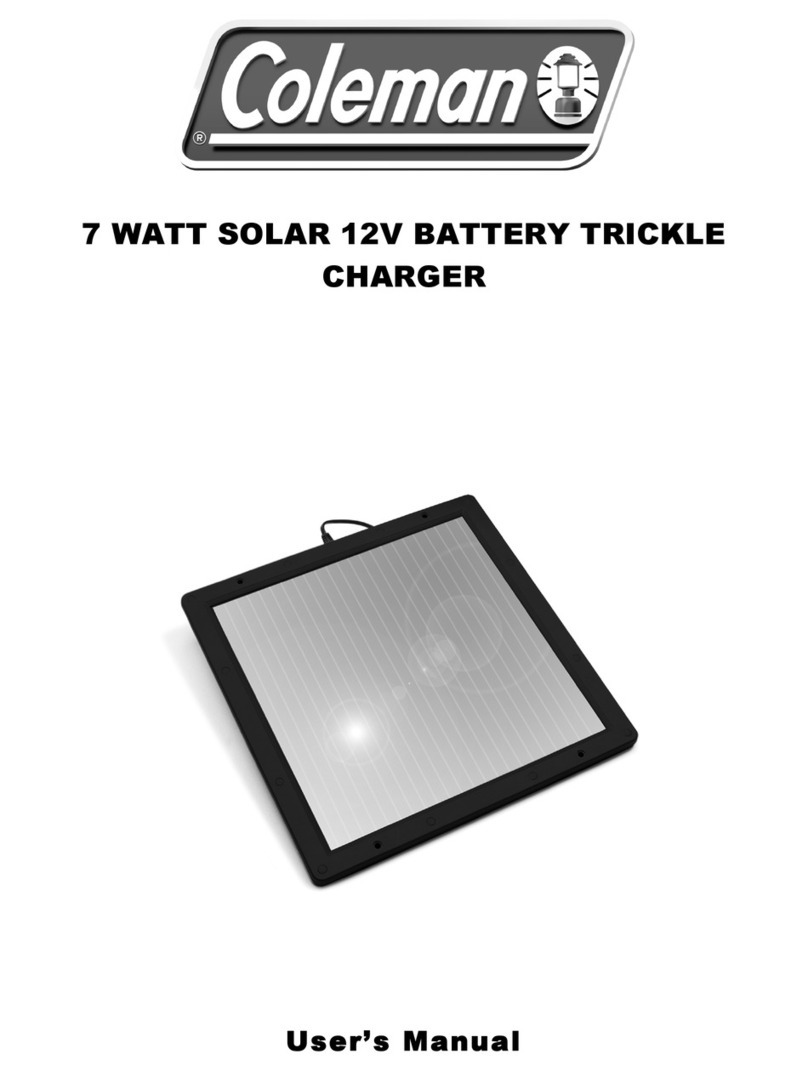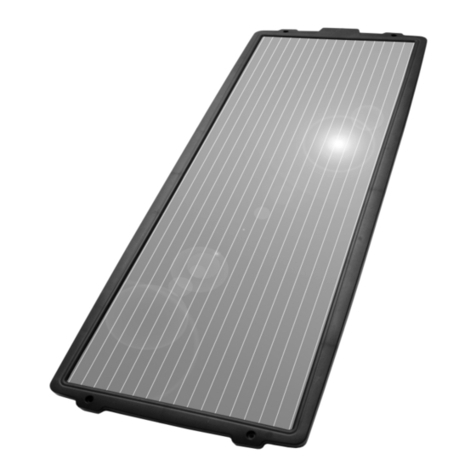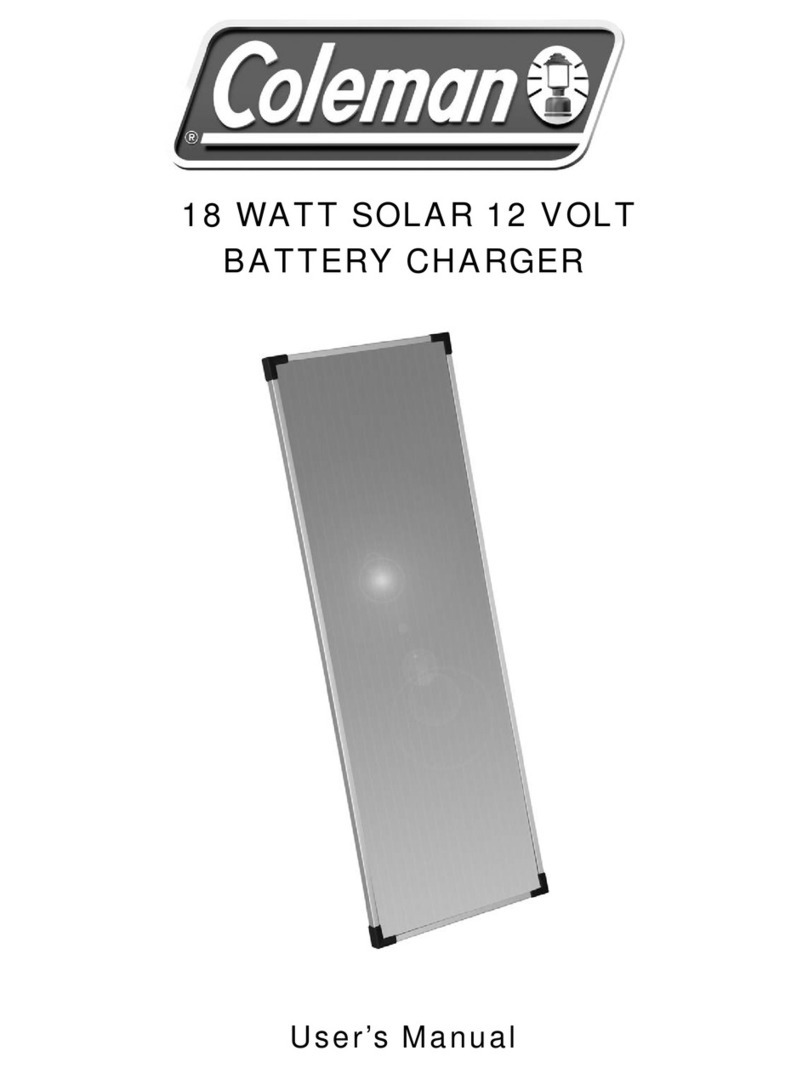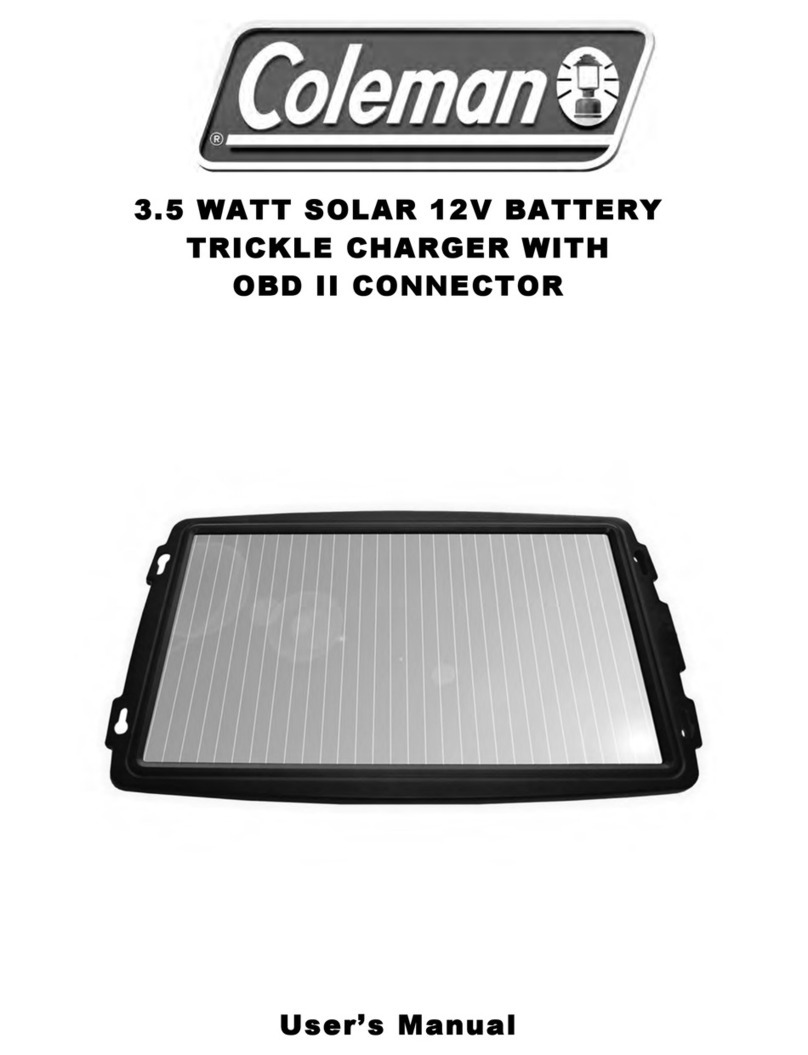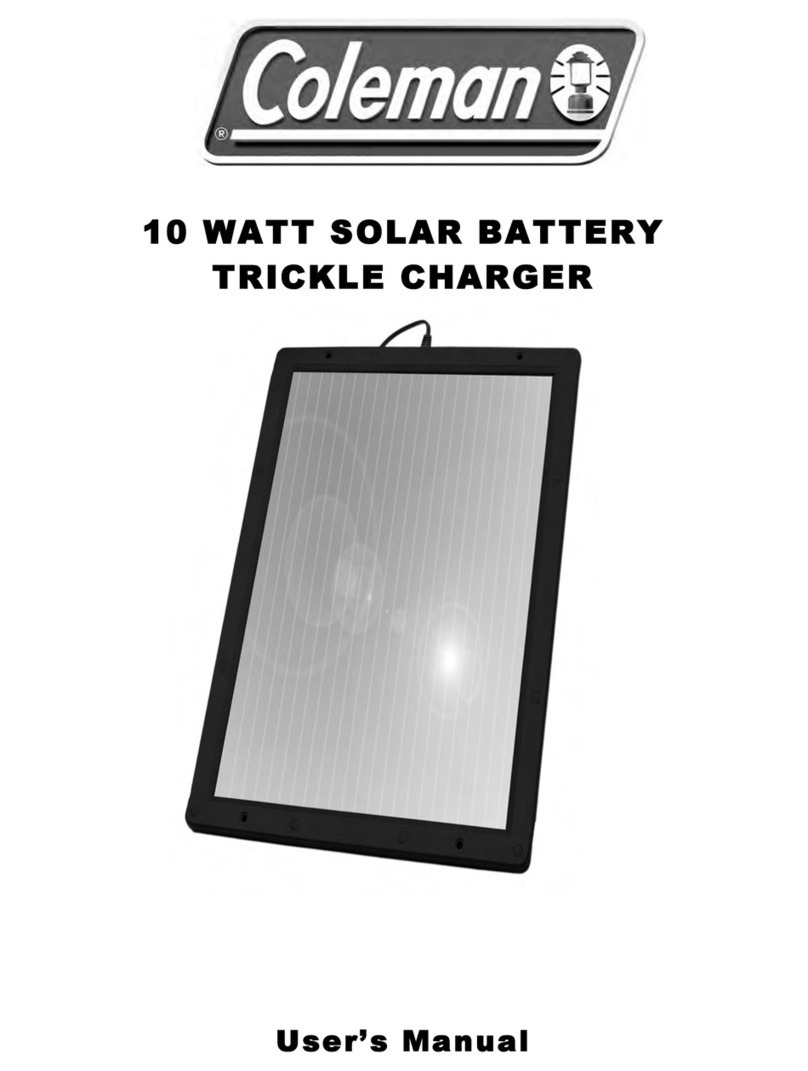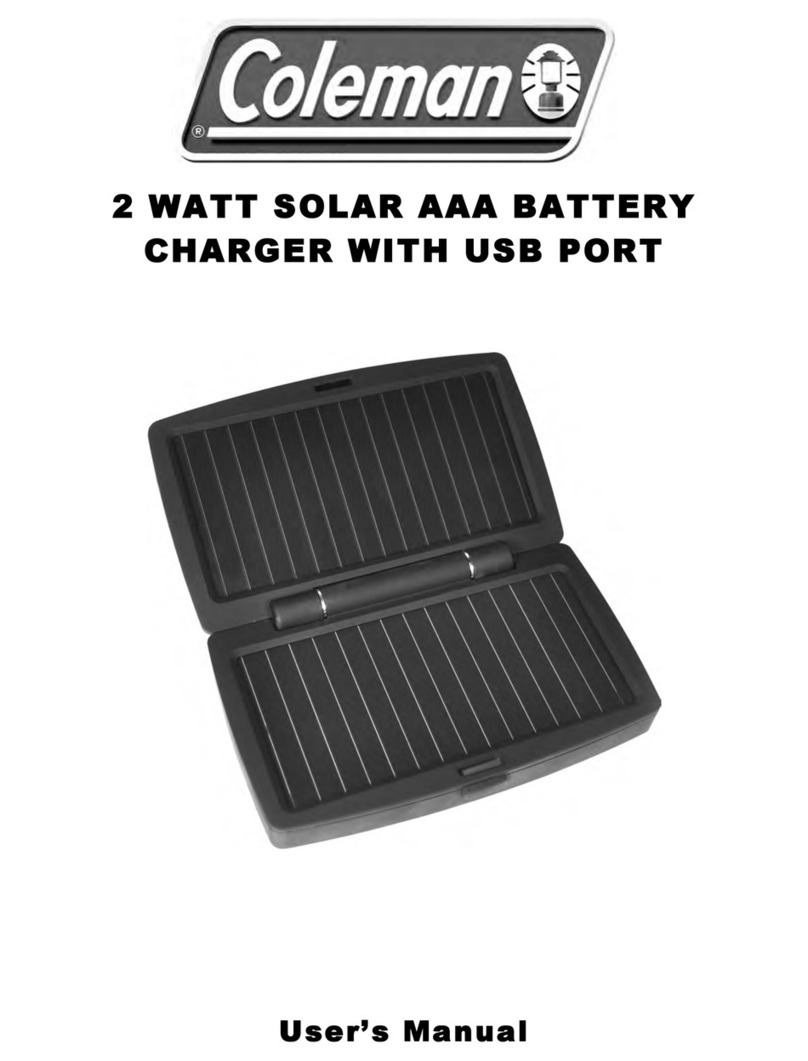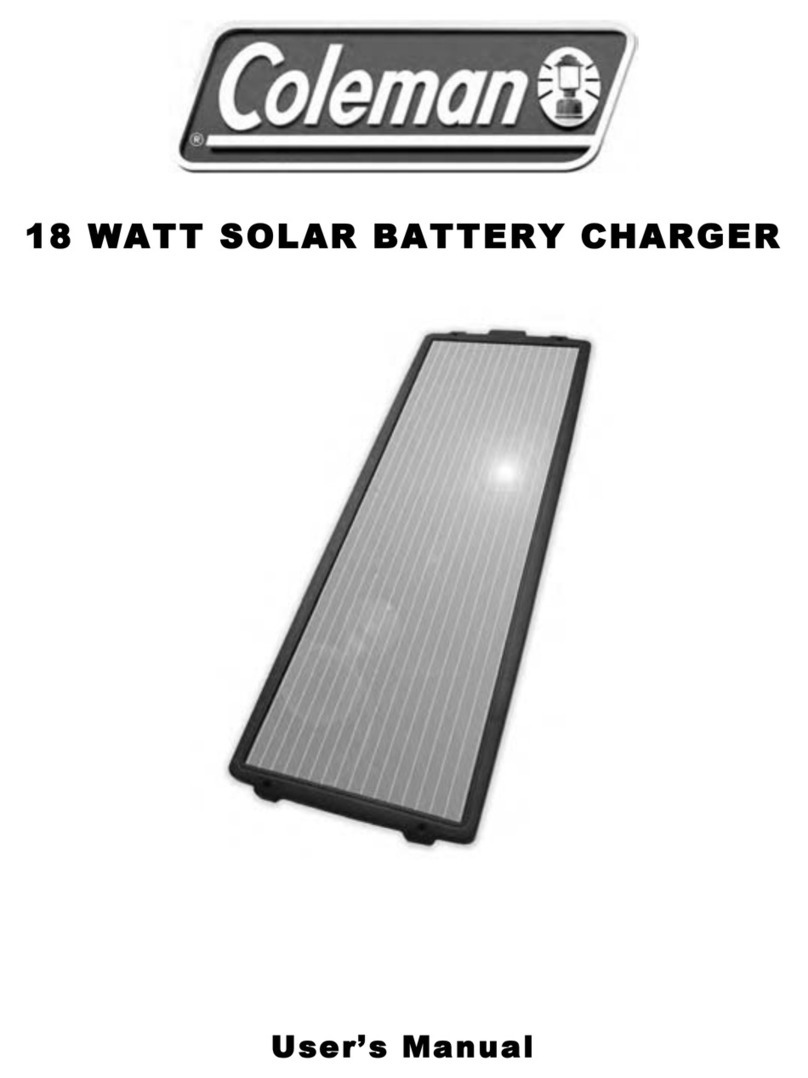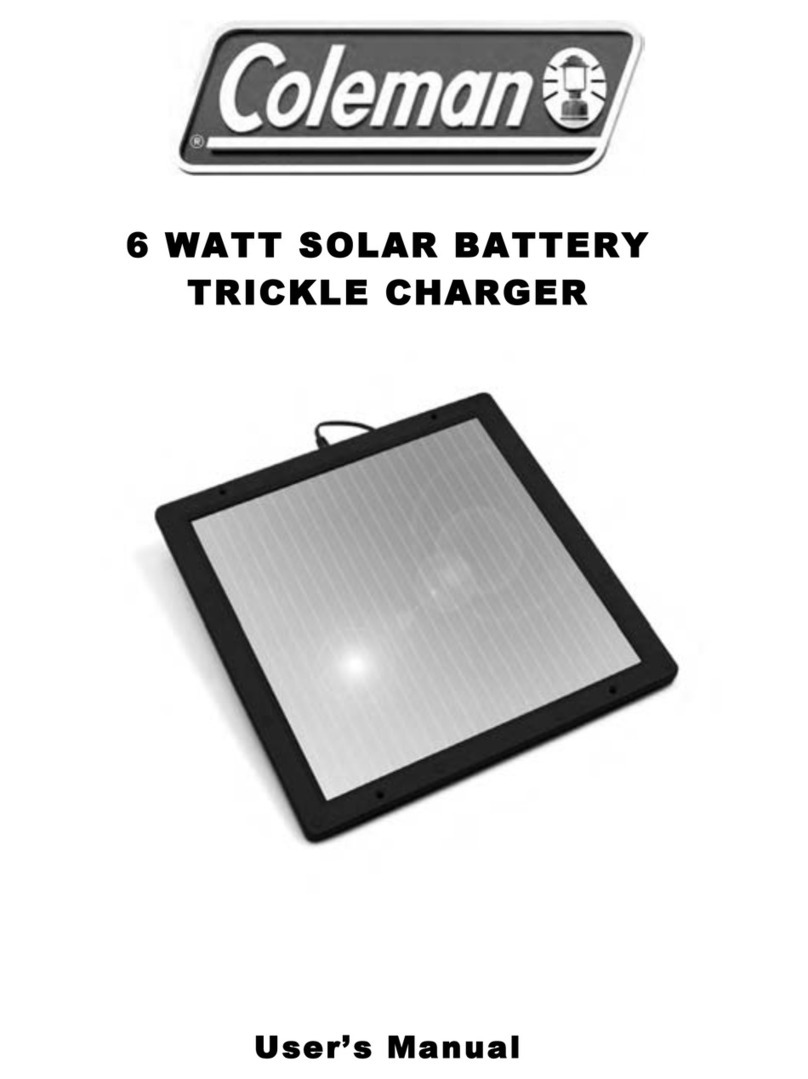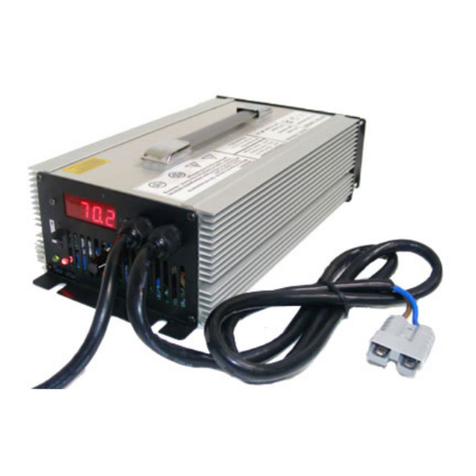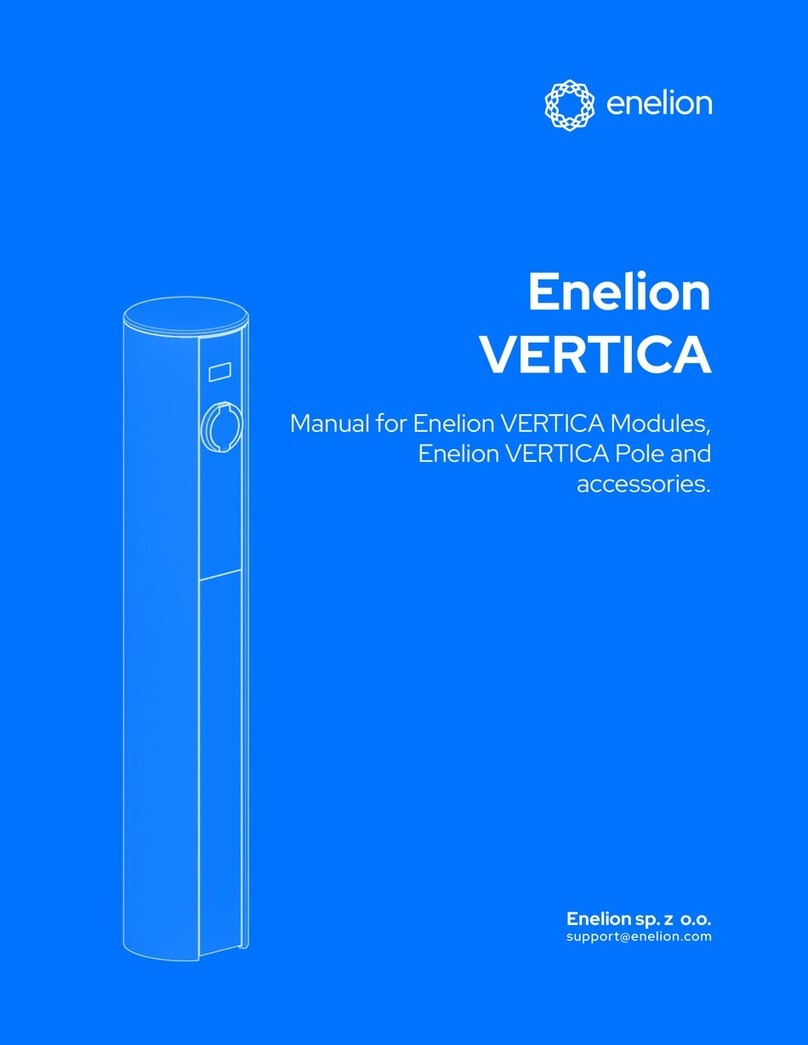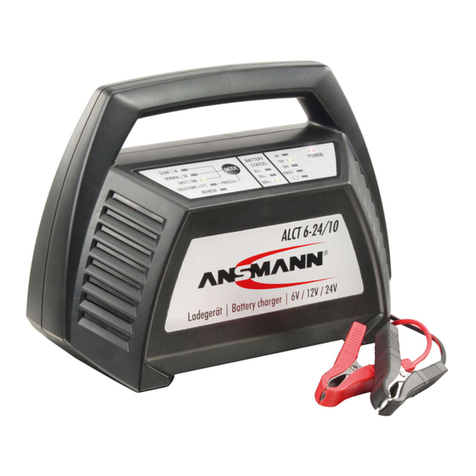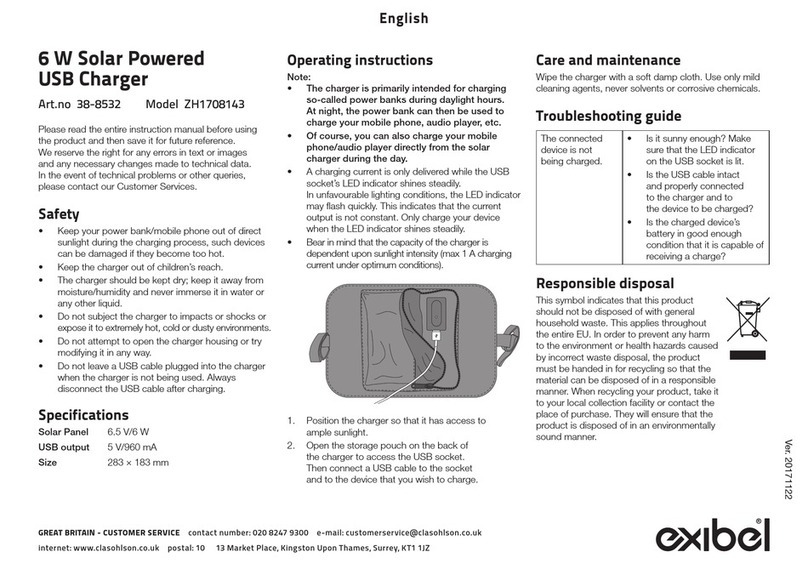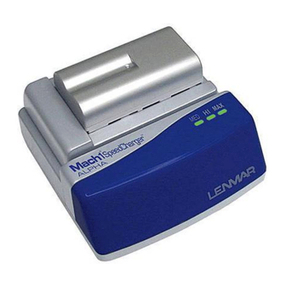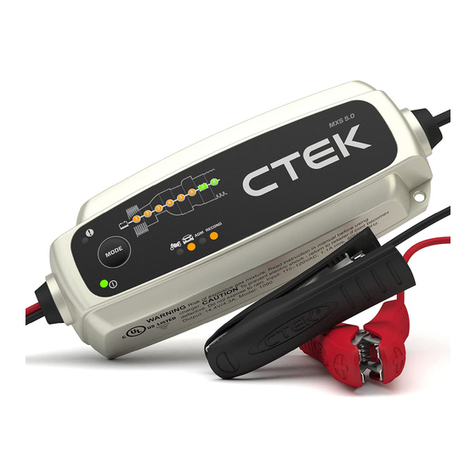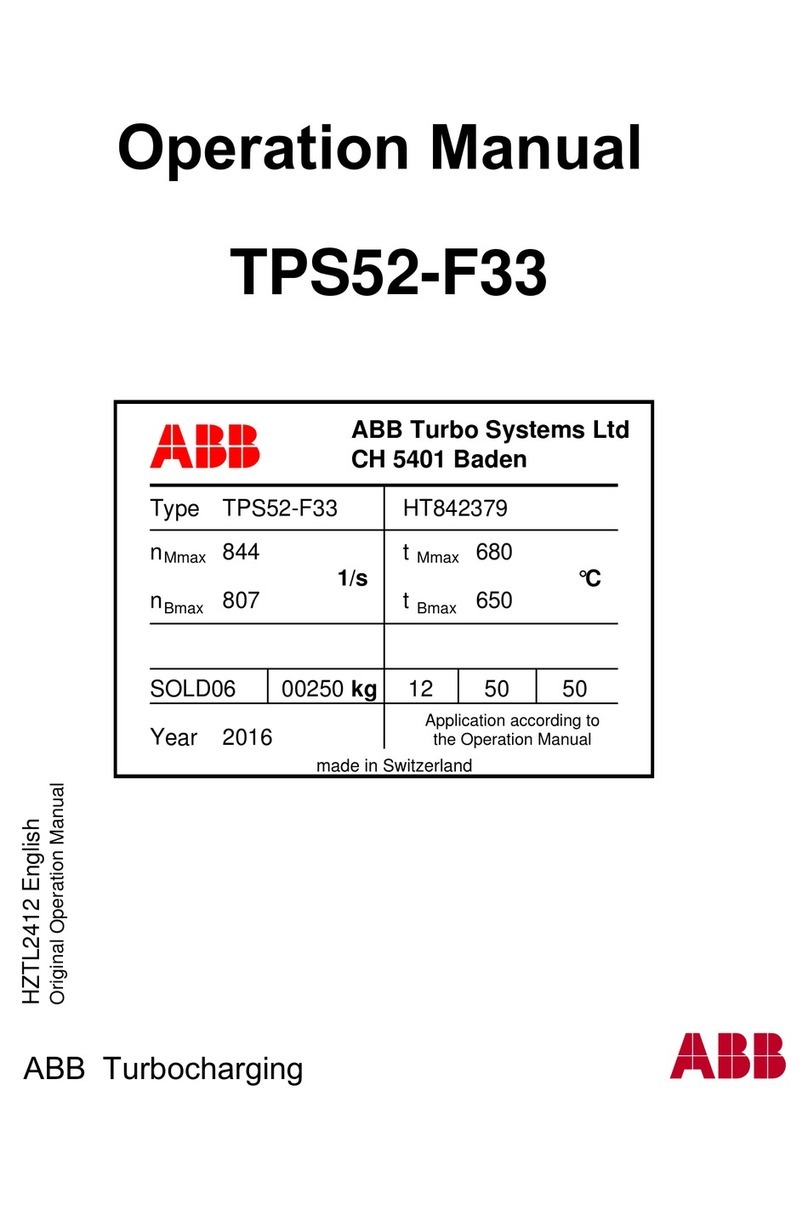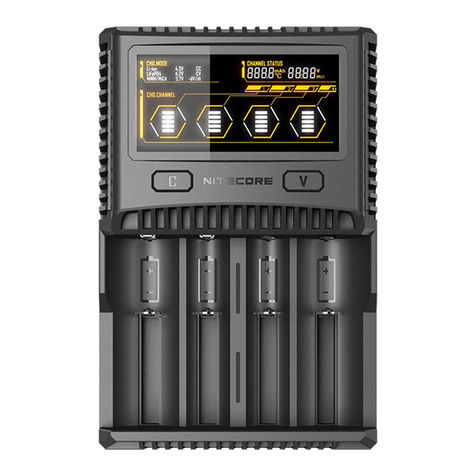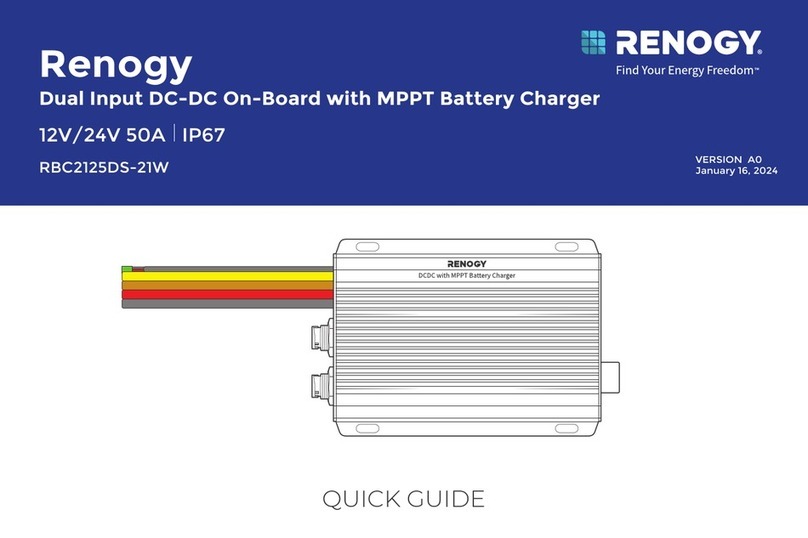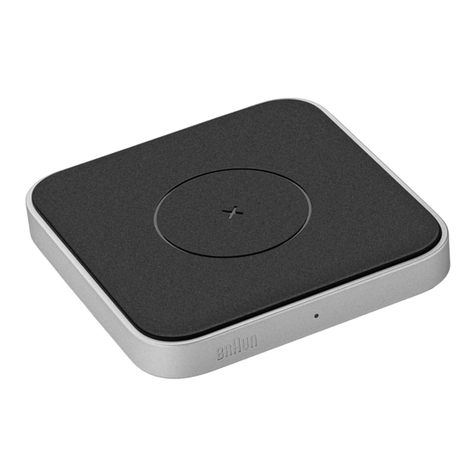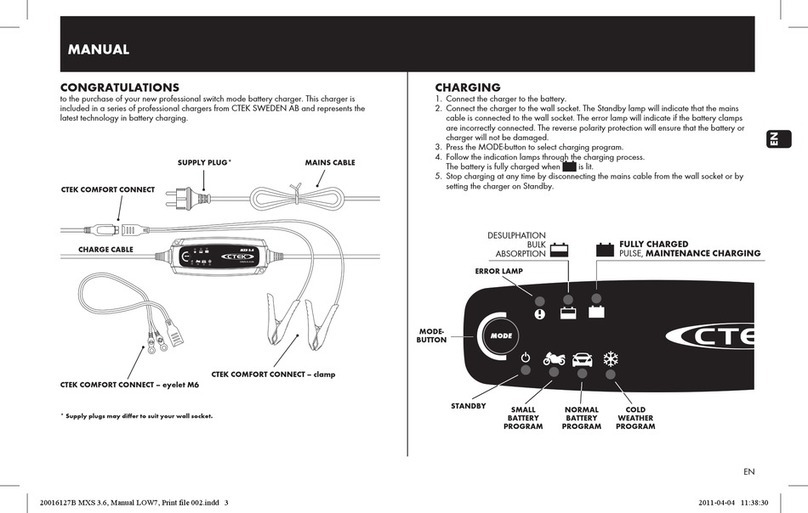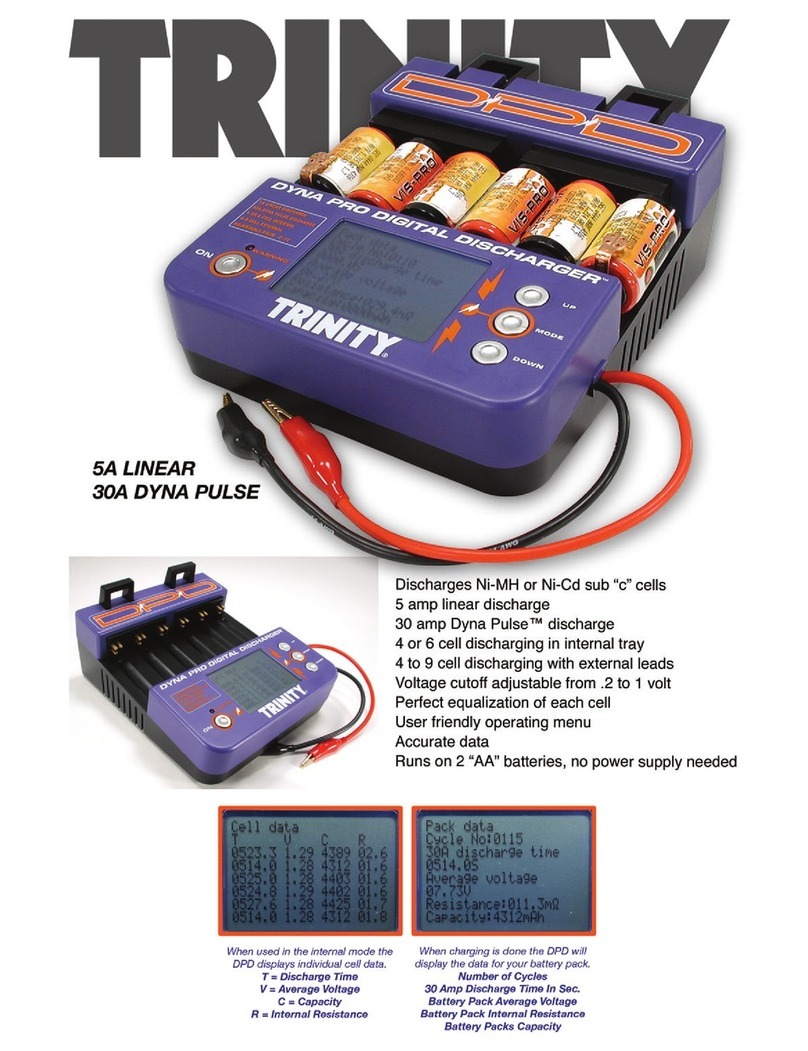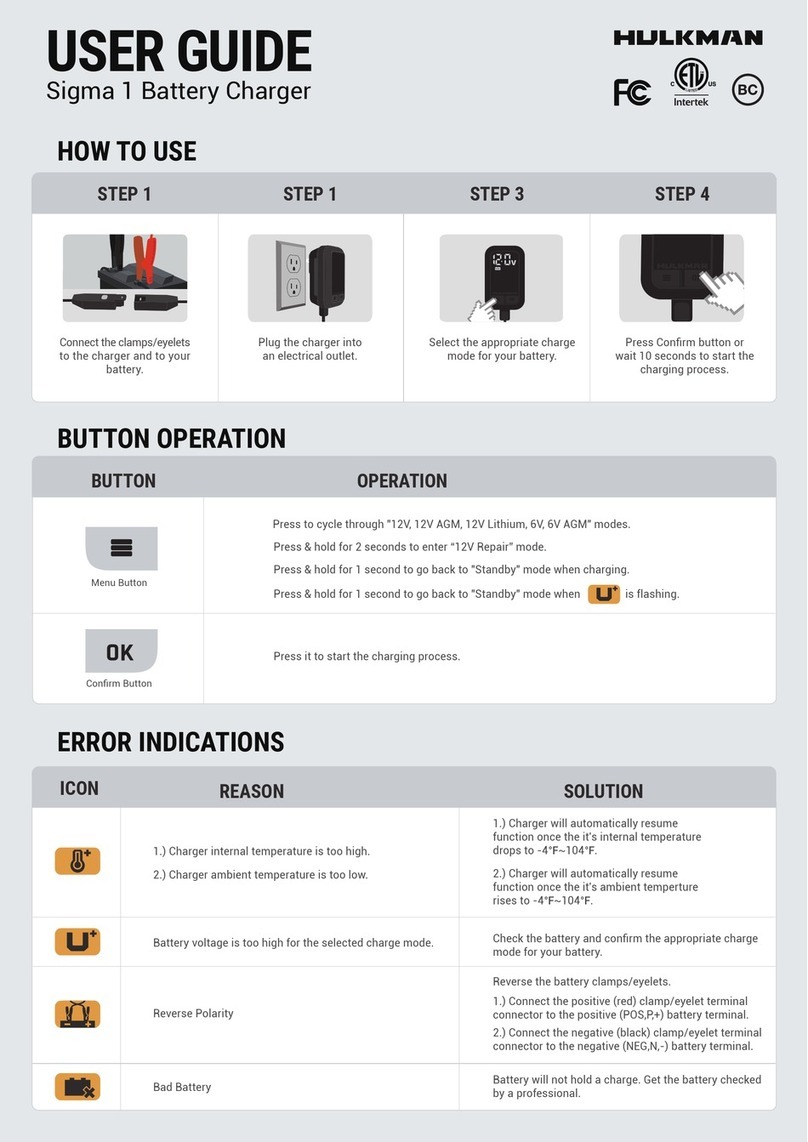4
NEAR BATTERY MAY CAUSE BATTERY EXPLOSION. TO REDUCE RISK OF A
SPARK NEAR BATTERY:
lPosition AC and DC cords to reduce risk of damage by hood, door or moving engine
part.
lStay clear of fan blades, belts, pulleys, and any other parts that can cause injury to
persons.
lCheck polarity of battery posts POSITIVE (POS., P, +) post usually has larger diameter
than NEGATIVE -(NEG., N, -).
lDetermine which post of battery is grounded (connected) to chassis.
lFor negative-grounded vehicle, first connect POSITIVE (RED) clip from charger to
POSITIVE (POS., P, +) ungrounded post of battery. Then connect NEGATIVE (BLACK)
terminal to vehicle chassis or engine block away from battery.
lFor positive-grounded vehicle, connect NEGATIVE (BLACK) clip from charger to
NEGATIVE (NEG., N, -) ungrounded post of battery. Connect POSITIVE (RED) clip to
vehicle chassis or engine block away from battery keeping the battery terminal well
removed there from.
lDo not connect any charger clips to carburetor, fuel lines, or sheet-metal body parts.
Connect to a heavy gauge metal part of the frame or engine block.
lConnect charger AC supply cord to electric outlet.
lWhen disconnecting charger, turn switches (if supplied) to off, disconnect charger from
AC power, remove clip from vehicle chassis, and then remove clip from battery terminal.
See operating instructions for length of charge information.
lFOLLOW THESE STEPS WHEN BATTERY IS OUTSIDE VEHICLE. A SPARK NEAR
THE BATTERY MAY CAUSE BATTERY EXPLOSION. TO REDUCE RISK OF A
SPARK NEAR BATTERY:
lCheck polarity of battery posts. POSITIVE (POS., P, +) battery post usually has a
larger diameter than NEGATIVE (NEG., N, -) post. Some batteries are equipped with
'Wing-Nut' terminals allowing for easy placement of the terminals to these posts.
lAttach at least a 24-inch long 18-gauge (AWG) insulated battery cable to NEGATIVE
(NEG., N, -) battery post.
lConnect POSITIVE (RED) charger terminal to POSITIVE (POS., P, +) post of battery.
lPosition yourself and free end of cable as far away from battery as possible -then
connect NEGATIVE (BLACK) terminal to free end of cable.
lDo not face battery when making final connection.
lConnect charger AC supply cord to electrical outlet
lWhen disconnecting charger, always do so in reverse sequence of connecting
procedure and break first connection while as far away from battery as practical
A marine (boat) battery must be removed and charged on shore. To charge it on board
requires equipment specially designed for marine use
MAIN FEATURES:
Automatic Switching Mode Battery Charger & Maintainer
•Easy to Use: The Battery Charger is easy to operate and requires no technical
experience.
•Charge & Maintain - Automatic Charge: On power up, the charger will
automatically go to charging system, then could be left unattended and never
overcharge your batteries.
•Charge & Maintain - Automatic Maintenance: When the battery is charged to "full"
state, the charger automatically switches to maintain the battery. It will monitor the

